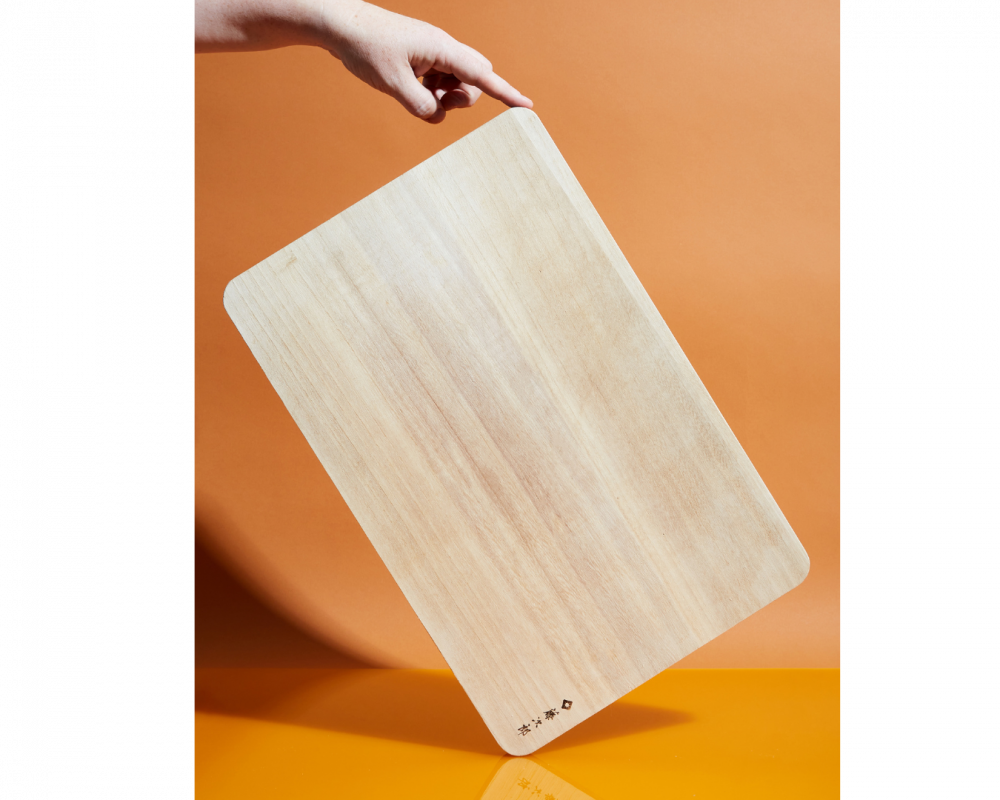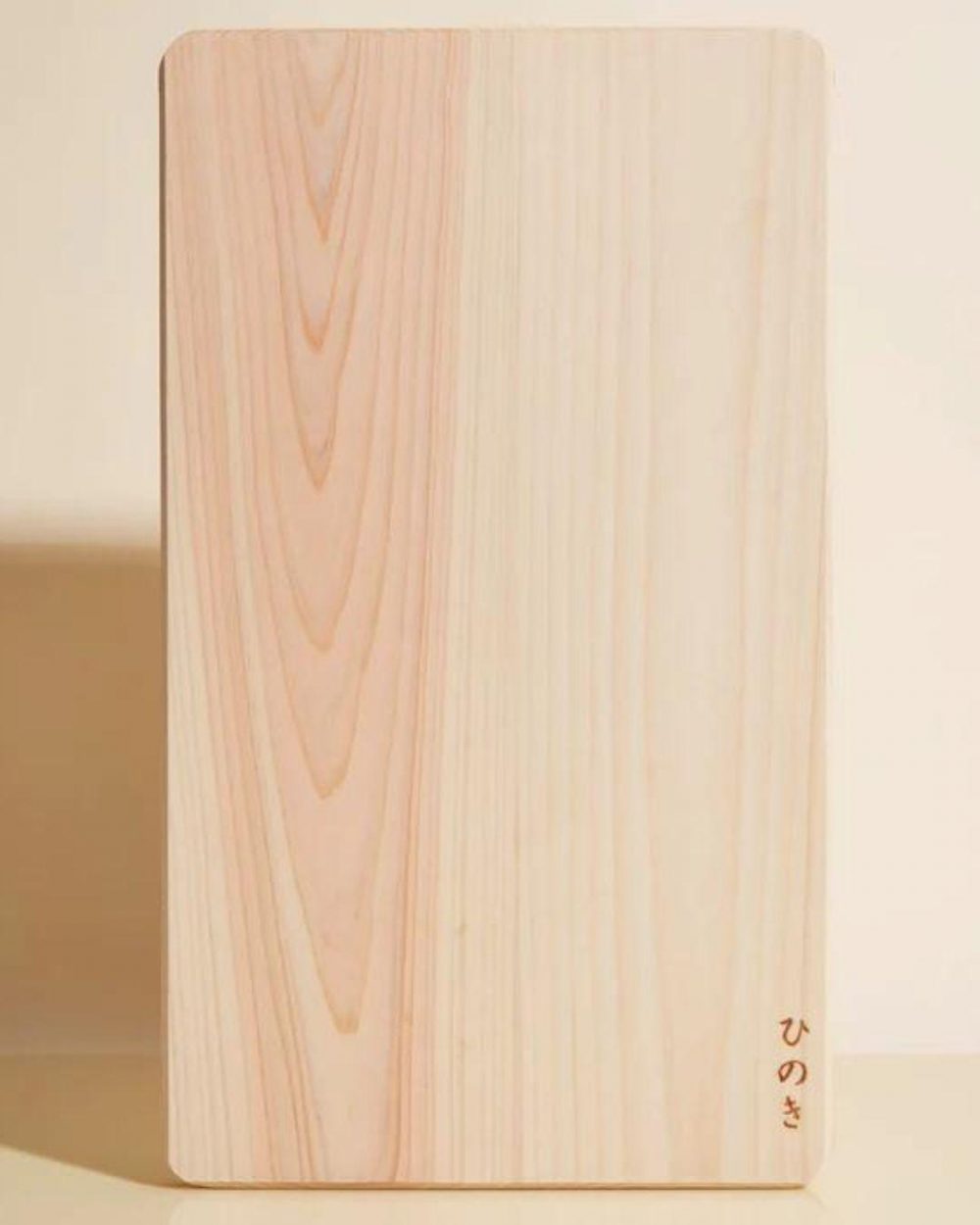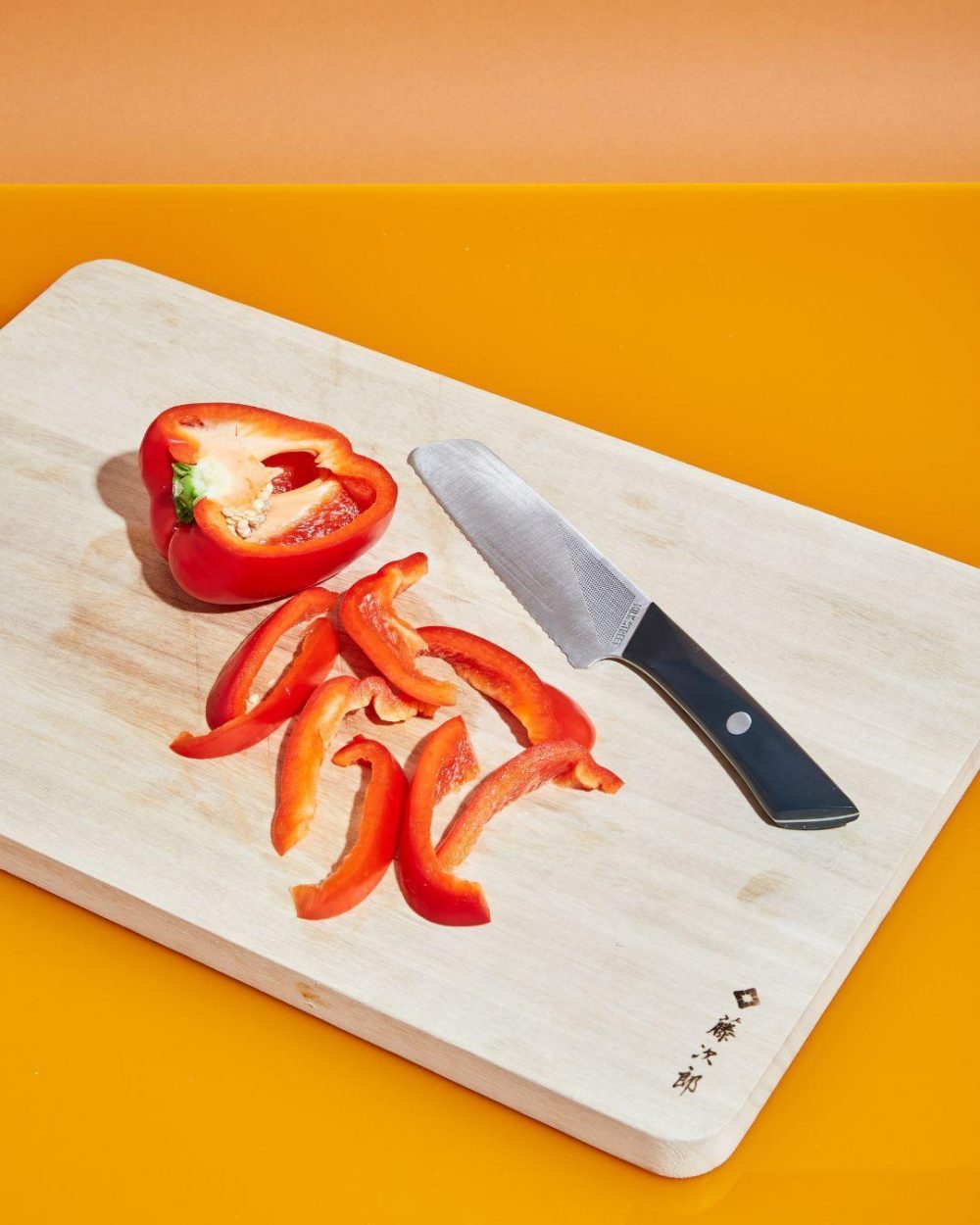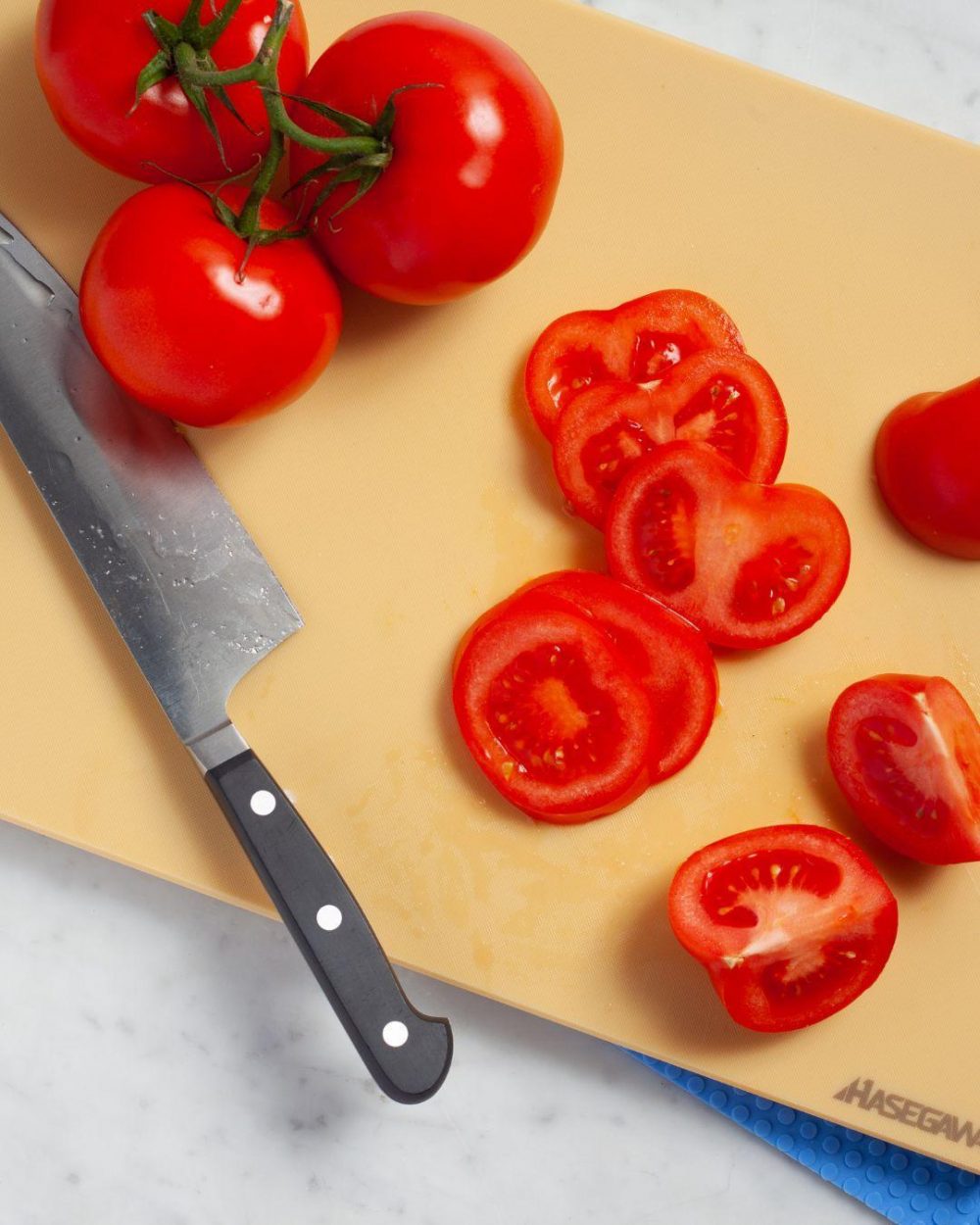Never use a hard board
If you’re trying to dull a blade, would you whack it repeatedly against something hard, like marble, or soft, like foam? This is why we run for the hills when we see a hard board! Over time, a hard board will cause the blade to bend slightly and then “roll,” which means that the knife edge has folded over itself. (Rolling is hard to detect with the naked eye, but you might see thin reflections of light on the edge of the blade. The easier method is the paper test—watch Chris demo it on Instagram.
A hard board made of bamboo or glass is also unsafe! It’ll cause the knife to slip and glance off the surface, whereas a soft board cushions the blade.
Matt recommends using those hard boards to serve cheese, or mend a fence, perhaps.
How to tell that your board is too hard
When your blade hits the surface, you should hear a soft “thump,” not a tinny “thwack.” It should leave traces of your cuts after use. A wooden board should feel soft to the touch, almost like balsa.
We recommend...
For Lightweight Prep: Himepla Hinoki
As we discovered in Japan, hinoki wood perfectly lends itself to the optimal cutting board. It’s featherlight, which means we don’t have to lug out the thick, heavy-duty slab. And it’s durable—in fact, the over 1,300-year-old Hōryūji Temple, the world's oldest surviving wooden structure, was built of hinoki wood.
Our e-commerce culinary coordinator Haley Laube feel in love with this board amidst a hinoki deep dive. Since hinoki wood is generally going to ensure a decent board, they narrowed down around a dozen options by size and weight (some were too thick, with odd dimensions, and flimsy swivel stands). They settled on Himepla’s small board perfectly sized for prep tasks.
For All-Purpose Wood: Tojiro Paulownia
This is the go-to large prep board, weighing in at only a couple pounds. Even more lightweight than hinoki boards, Laube worried paulowina wood wouldn’t hold up to cut tests and months of heavy use. Not so.
“It passed the test and is currently still part of my regular rotation at home,” they write. “It’s actually my favorite cutting board.”
Similar to hinoki, paulowina wood makes for extremely lightweight boards, contains anti-bacterial properties and “heals.” Considered sacred by many in Japan, paulowina trees grow quickly and stand up to the elements—the wood’s anti-bacterial properties and regenerative qualities ensure a long life as a cutting board.
Top Choice: Hasegawa Wood Core Soft Rubber
This is what Matt calls “the Cadillac of cutting boards,” with a solid wooden core that prevents warping and many layers of soft plastic for plenty of give.
Many perks make this the cutting board of sushi chefs in Japan, where knife care is particularly important—often-used techniques like the “pull and slice” lead to chipped edges if performed on a hard board. The nonslip surface makes it safer and lends itself to sharp and precise cuts. The material’s strong antimicrobial properties—one of the highest standards in Japan—prevents it from holding germs as much as a standard cutting board would between uses. And it’ll hold up to high-temperature dishwashing.
In Matt’s words, “a joy to use."
Watch Matt on Instagram.
Join the conversation on Facebook, Twitter, Instagram and Pinterest.
And if you're looking for more Milk Street, check out our livestream cooking classes with our favorite chefs, home cooks and friends for global recipes, cooking methods and more.global recipes, cooking methods and more.







